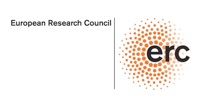

Interfaces, Bio-Engineering & Microfluidics


Several lines of applications to lab on a chip devices are developed, including the cell biology or enzymatic kinetics in droplets. Our approach to these devices takes advantage of dominant physical mechanisms at microfluidic scales, such as surface tension and diffusion. We work on using these effects in our favor, coupled with quantitative measurements within droplets, in order to advance biological science and technology.
Representative publications:
-
• Sickling of red blood cells through rapid oxygen exchange in microfluidic drops. P.Abbyad, P-L. Tharaux, J-L. Martin, C.N. Baroud, and A. Alexandrou Lab on a Chip, v. 10, pp. 2505-2512, 2010.
-
• Monitoring a Reaction at Submillisecond Resolution in Picoliter Volumes
A. Huebner, C. Abell, W. Huck, C.N. Baroud and F. Hollfelder. Anal. Chem., v. 83, pp. 1462-1468.


Our research is multi-disciplinary, ranging from physics and fluid mechanics to biology and chemistry. Below are a few of the main topics currently being studied in the lab. Other related topics are constantly being explored, so look at our publications list for the most complete description.
Drops of water in oil are used as mobile micro-reactors in which biological or chemical reactions can be performed. We have developped a suite of toolboxes for the control of such drops. Initial work centered on the use of localized heating for the sorting, fusion, production, or storage of droplets. More recent work has addressed passive two-dimensional manipulation through the «rails and anchors» technique. The integration of the two approaches was also demonstrated.
Generation and Manipulation of droplet micro-reactors

Representative publications:
-
•An optical toolbox for total control of droplet microfluidics
C.N. Baroud, M. Robert de Saint Vincent and J.P. Delville. Lab on a Chip v. 7, pp. 1029-1033, 2007
-
• Laser-induced force on a microfluidic drop: Origin and magnitude
-
E.Verneuil, M L. Cordero, F. Gallaire, and C.N. Baroud. Langmuir, v. 25, pp. 5127-5134, 2009
-
• Rails and anchors: Guiding and trapping droplet microreactors in two dimensions
-
P.Abbyad, R. Dangla, A. Alexandrou and C.N. Baroud. Lab on a Chip, v. 11, pp. 813-821, 2011.
-
•Trapping microfluidic drops in wells of surface energy.
R. Dangla, S. Lee, and C.N. Baroud. In press, Phys. Rev. Lett., v. 107, pp. 124501, September 2011.

Microfluidics is used to create networks of channels in which two-phase flows are explored. We focus on branching binary trees as a simplified model of the flow in the human lung. We study the long range interactions in the networks, which have implications on flows in porous media, lab on a chip devices, and in physiological flows.

Representative publications:
-
•Local interactions and the global organization of a two-phase flow in a branching tree. Song, Y, Manneville, P. and Baroud, C.N. Phys. Rev. Lett., v. 105, pp. 134501.
-
•The propagation of low-viscosity fingers into fluid-filled, branching networks. C.N. Baroud, S. Tsikata, and M. Heil. J. Fluid Mech., v. 546, pp. 285-294, 2006.
Applications to lab on a chip devices
Flows in complex geometries

Paramecium is a uni-cellular organism that swims by using its thousands of cilia. We have studied the swimming gaits and discovered a non-ciliated swimming strategy to escape from aggression. The organisation of the ciliary beating is also being studied.
Paramecium swimming patterns

Representative publications:
-
•Transitions between three swimming gaits in Paramecium escape.
A. Hamel, C. Fisch, L. Combettes, P. Dupuis-Williams, C.N. Baroud. Proc. Nat. Acad. Sci., v. 108, 7290-7295, May 2011.

